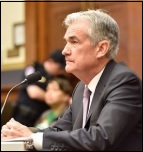By Pam Martens and Russ Martens: September 9, 2020 ~
The Dow Jones Industrial Average closed with a loss of 632 points yesterday (a 2.25 percent decline) while the Nasdaq erased 465 points for a loss of 4.11 percent.
As Wall Street witnessed its most vicious correction since March over the past three consecutive trading sessions, a curious thing happened at the Fed. The Fed’s repo loan money spigot which had churned out more than $9 trillion cumulatively to the trading houses of Wall Street from the inception of the bailout program on September 17, 2019 to our tally in mid-March of this year, pumped out nary a drop of cold cash in repo loans as the market swooned.
Big zeros in loans provided by the Fed populated their data sheets on all three days of the selloff.
However, to comfort Wall Street with the knowledge that the Fed is prepared to go all out if the need arises, the Fed holds its repo loan operation twice a day: at 8:30 a.m. and again at 1:45 p.m. – every single day that the U.S. market is open.
There was no such recalcitrance on the part of the Fed’s primary dealers (trading houses on Wall Street) to borrow from the Fed in the six months from September to March.
On October 24 of last year, we reported the following:
“Yesterday the Federal Reserve Bank of New York (New York Fed) announced that the giant money spigot it turned on for Wall Street on September 17 would be growing exponentially beginning today.
“The New York Fed will now be lavishing up to $120 billion a day in cheap overnight loans to Wall Street securities trading firms, a daily increase of $45 billion from its previously announced $75 billion a day. In addition, it is increasing its 14-day term loans to Wall Street, a program which also came out of the blue in September, to $45 billion. Those term loans since September have been occurring twice a week, meaning another $90 billion a week will be offered, bringing the total weekly offering to an astounding $690 billion. It should be noted that if the same Wall Street firms are getting these loans continuously rolled over, they are effectively permanent loans. (That’s exactly what happened during the 2007-2010 Wall Street collapse: some teetering Wall Street casinos received, individually, $2 trillion in cumulative loans that were rolled over for two and one-half years – without the authorization or even awareness of Congress or the American people…
“This latest announcement from the Fed comes on the heels of an October 11 announcement that it is launching a program to buy up $60 billion a month in Treasury bills and that program will last into ‘at least’ the second quarter of next year.
“What the New York Fed is doing is unprecedented in U.S. history and yet you will find no mention of it on any front page of a newspaper today. This is just a partial list of what makes this action unprecedented or highly questionable:
“No Wall Street crisis has been announced to the public to explain these massive loans and Treasury buybacks;
“Not one hearing has been held by Congress on the matter;
“Not one official elected by the American people has authorized these loans;
“The loans are not being made to commercial banks (which could re-loan the money to stimulate the U.S. economy). The loans are going to the New York Fed’s primary dealers, which are stock and bond trading houses on Wall Street who count hedge funds among their largest borrowers…
“Many of the primary dealers are units of foreign banks whose share prices have been in freefall. The Fed is making these loans at approximately 2 percent interest – an interest rate these firms could not come anywhere close to obtaining in the open market;
“These same foreign banks are counterparties to mega U.S. banks’ derivative trades – raising the suggestion that this is another bailout of Wall Street’s derivatives mess as occurred in 2008;
“The Dodd-Frank financial reform legislation of 2010 was supposed to rein in this exact type of abuse by the New York Fed and, in fact, it states that Congress must be informed as to which banks are receiving the money to be sure it’s not going, once again, to failing financial institutions as happened in the last crisis…”
The Fed has come under withering criticism from market veterans for killing the market functions of price discovery and capital allocation with its flood of repo loans and 11 other bailout programs. This may have led to a reluctance on the part of Wall Street banks’ trading units to continue to drink at the Fed’s daily repo loan trough – at least for now.


